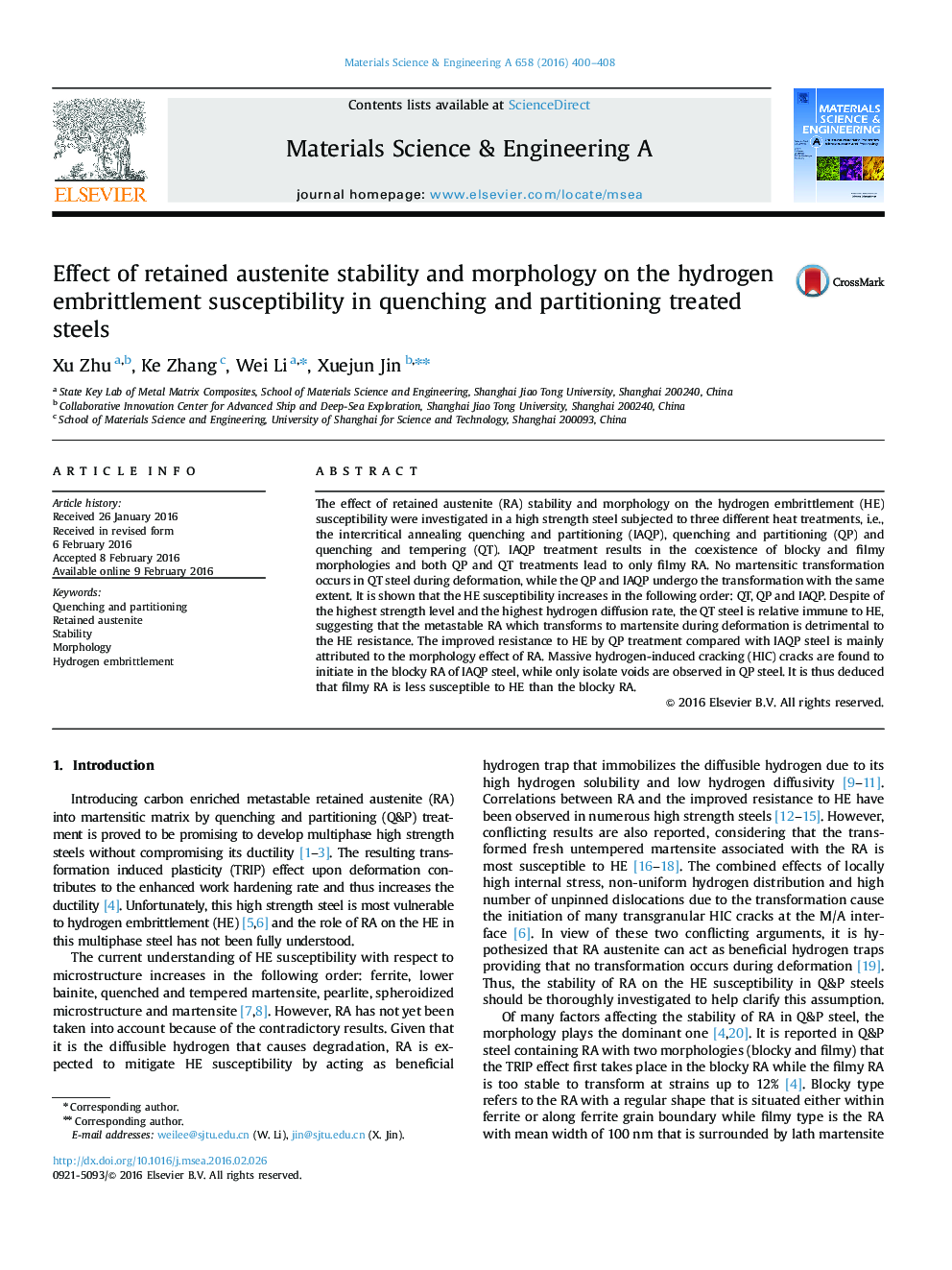| Article ID | Journal | Published Year | Pages | File Type |
|---|---|---|---|---|
| 1573650 | Materials Science and Engineering: A | 2016 | 9 Pages |
Abstract
The effect of retained austenite (RA) stability and morphology on the hydrogen embrittlement (HE) susceptibility were investigated in a high strength steel subjected to three different heat treatments, i.e., the intercritical annealing quenching and partitioning (IAQP), quenching and partitioning (QP) and quenching and tempering (QT). IAQP treatment results in the coexistence of blocky and filmy morphologies and both QP and QT treatments lead to only filmy RA. No martensitic transformation occurs in QT steel during deformation, while the QP and IAQP undergo the transformation with the same extent. It is shown that the HE susceptibility increases in the following order: QT, QP and IAQP. Despite of the highest strength level and the highest hydrogen diffusion rate, the QT steel is relative immune to HE, suggesting that the metastable RA which transforms to martensite during deformation is detrimental to the HE resistance. The improved resistance to HE by QP treatment compared with IAQP steel is mainly attributed to the morphology effect of RA. Massive hydrogen-induced cracking (HIC) cracks are found to initiate in the blocky RA of IAQP steel, while only isolate voids are observed in QP steel. It is thus deduced that filmy RA is less susceptible to HE than the blocky RA.
Related Topics
Physical Sciences and Engineering
Materials Science
Materials Science (General)
Authors
Xu Zhu, Ke Zhang, Wei Li, Xuejun Jin,
